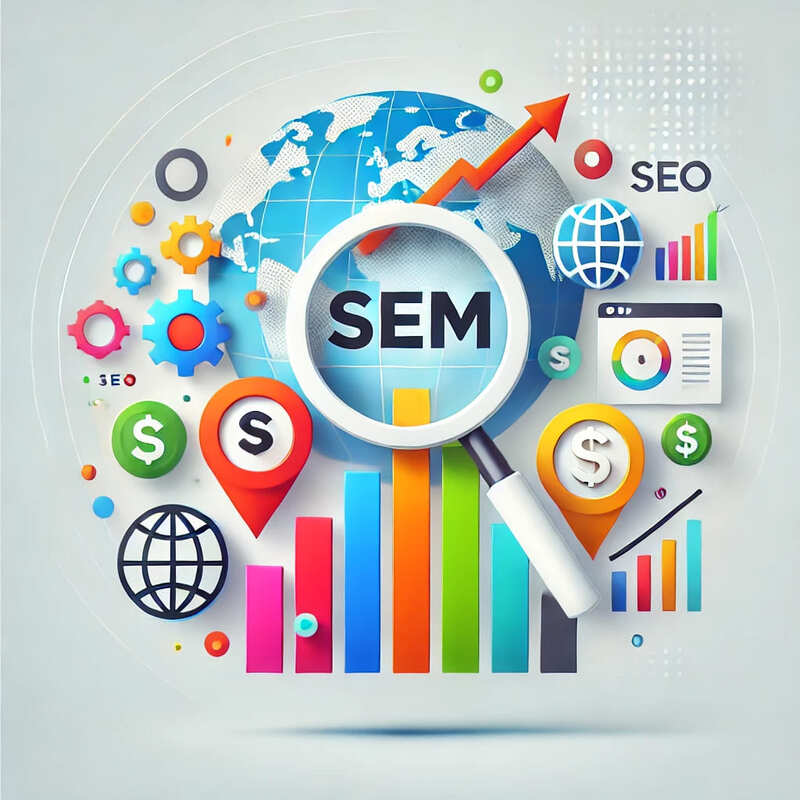Introduction
Search Engine Marketing (SEM) and Search Engine Optimization (SEO) are vital components of digital marketing, aimed at increasing a website’s visibility in search engine results. While they are often used interchangeably, they serve different but complementary roles in the digital marketing ecosystem. This article aims to provide a comprehensive understanding of SEM and SEO, focusing on their significance, strategies, and best practices in today’s digital landscape.
The Importance of SEM & SEO
Both SEM and SEO serve critical functions in digital marketing:
- Visibility: Increase your brand’s visibility on search engines.
- Traffic Generation: Drive targeted traffic to your website.
- Lead Conversion: Convert website visitors into potential customers.
- Credibility: Improve brand credibility by ranking higher in search results.
Core Components of SEM & SEO
Search Engine Marketing (SEM)
- Paid Search Ads: These are the ads that appear at the top or bottom of search engine results.
- Display Ads on Search Engines: Visual-based ads that appear on partner websites.
- Retargeting on Search Engines: Ads that target users who have previously visited your website but did not make a purchase.
Search Engine Optimization (SEO)
- On-Page SEO: Optimization of website content for search engines.
- Off-Page SEO: Building backlinks and other external signals to improve website authority.
- Technical SEO: Optimization of website structure and backend elements for search engines.
What is SEM?
SEM refers to the paid advertising efforts to increase a website’s visibility on search engines. It primarily involves Pay-Per-Click (PPC) advertising.
Types of SEM
- Pay-Per-Click (PPC): You pay each time someone clicks on your ad.
- Cost Per Mille (CPM): You pay for every 1,000 impressions your ad receives.
- *There are others as well
Benefits of SEM
- Immediate Results: Unlike SEO, SEM can provide immediate visibility.
- Targeting: Precise audience targeting based on keywords, location, and demographics.
- Budget Control: Set your budget and adjust based on performance.
What is SEO?
SEO is the practice of optimizing your website to rank higher in search engine results, thereby increasing organic traffic.
Types of SEO
- White-Hat SEO: Ethical SEO practices that are in line with search engine guidelines.
- Black-Hat SEO: Unethical practices that aim to manipulate search engine rankings.
Benefits of SEO
- Long-Term Strategy: Provides long-lasting results compared to SEM.
- Credibility: Users often trust organic search results over paid ads.
- Cost-Effective: No need to pay for clicks like in SEM.
Best Practices
- Keyword Research: Identify the right keywords for both SEM and SEO.
- Quality Content: Create high-quality, relevant content for SEO.
- Ad Copy Optimization: Write compelling ad copies for SEM.
- Analytics: Use tools like Google Analytics to measure both SEM and SEO performance.
Popular SEM & SEO Tools
- Google Ads: For SEM campaigns.
- Google Analytics: For performance tracking.
- SEMrush: For both SEM and SEO analytics.
- Moz: For SEO tracking and organic reach.
Conclusion
Understanding SEM and SEO is crucial for anyone involved in digital marketing. While SEM can offer quick results, SEO is a long-term strategy that builds credibility and organic reach. By understanding the nuances and benefits of both, you can create a more robust and effective digital marketing strategy.



